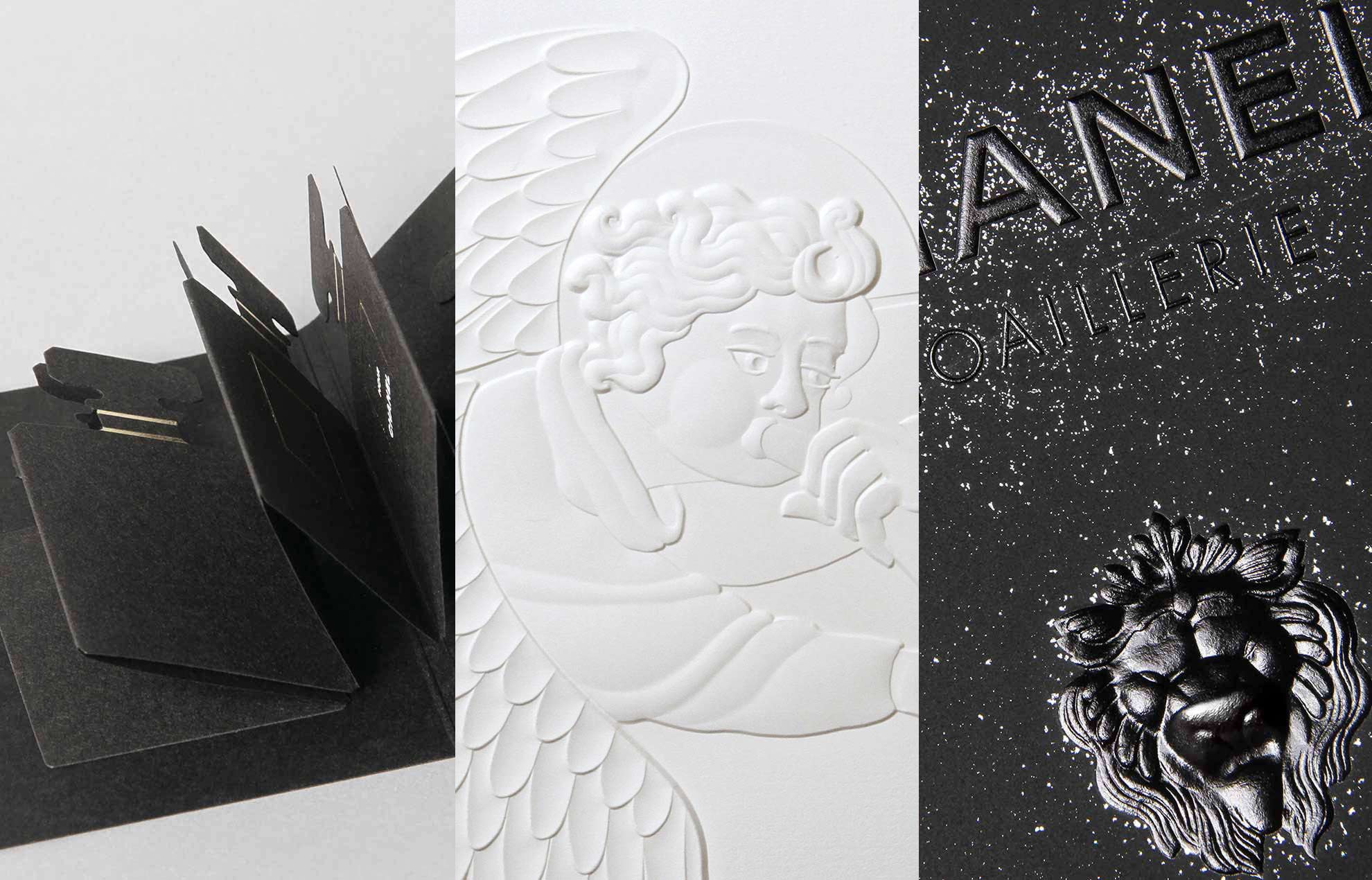Embossing is an age-old technique, originally developed for minting in ancient times. Before any embossing project can begin, the craftsman must create a special tool known as a die, traditionally engraved in brass. Though the advent of computer-assisted design tools has revolutionized engraving, the hands of an experienced craftsman are irreplaceable for many patterns. In 2014 Créanog opened its own engraving lab and the company now manufactures most of its own dies. Once engraved, the die is fitted onto a high-pressure mechanical press. Sheets of paper are then hand-fed into the press, one by one, to transfer the pattern from the die, which appears as raised areas on the paper.
Some embossing realizations
Hot stamping is a technique that draws strongly from the tradition for illuminating manuscripts during the Middle Ages. Just like embossing, hot stamping requires the manufacture of a die : a negative engraving of the desired image on a brass or magnesium plate. The die is fitted onto a high-pressure mechanical press and heated to 160° C. The die transfers the desired material onto the paper to create the pattern or text.
This technique can be used with a wide range of metallic and non-metallic shades and can create a variety of different effects : matt, glossy, diffraction, etc.
Some hot stamping realizations



